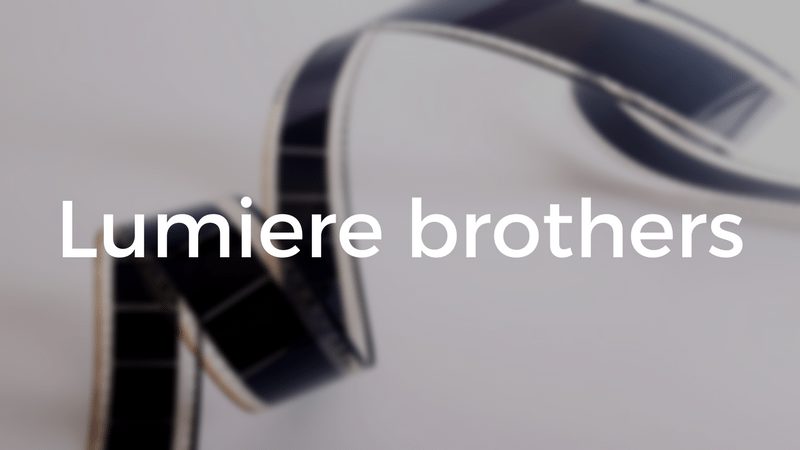Auguste and Louis Lumière
Episode #8 of the course Inventors who changed the world
The French Lumière brothers, Auguste and Louis, were pioneers of both motion and color photography. They created an early motion picture camera and projector, the Cinematographe, and the first motion picture (“Workers Leaving the Lumière Factory,” 1895). Although they did not invent cinematography and even turned away from it eventually, they were the first whose system and films caught the imagination of the world.
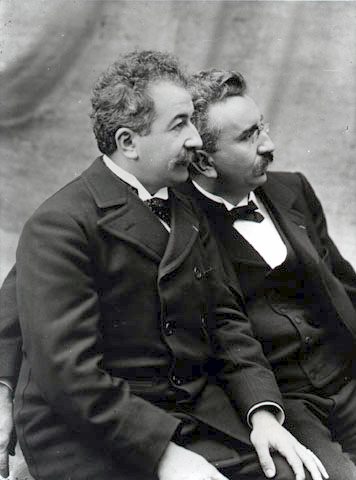 Auguste and Louis Lumière
Auguste and Louis Lumière
The Lumière brothers took over from their father, Charles-Antoine, who had a small factory producing photographic plates. When Auguste returned from military service in 1882, the factory was on the verge of bankruptcy. The brothers designed new machines to automate photographic plate production and a successful new type of plate.
When their father retired in 1892, they began working on a motion picture system superior to Thomas Edison’s kinetoscope—with sharper, brighter images, and for viewing by large audiences. Edison’s system was experienced through an eyepiece by one person at a time. They patented a variety of innovations. Holding the film at the lens with a metal fork and the film perforations used to move strips of film through cameras and projectors increased the sharpness of the image. Adding a flask of water to both concentrate the light on the film and absorb the heat made it brighter while reducing the risk of igniting the film. The fact that their system was hand-cranked rather than requiring electricity to advance the film was also an advantage at that time, in a world without electrical outlets.
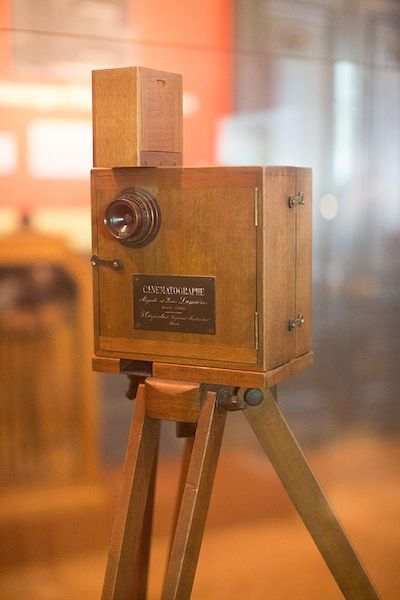 Cinématographe camera at the Institut Lumière, France
Cinématographe camera at the Institut Lumière, France
Their first patented system in 1895 combined recording and projection in one device—at 16 frames per second. Each film was about 50 feet long and played for 50 seconds, cranked through a projector by hand. During the following years, they made many short films of everyday French life—workers, street life, soldiers marching, a card game—and some comedy shorts. They created the first newsreel and documentaries and sent crews throughout the world to show films and shoot new ones.
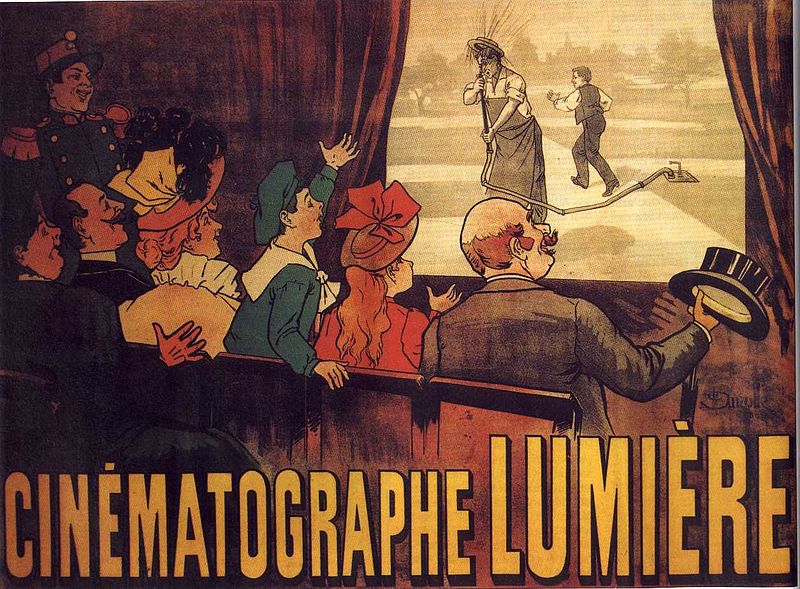 The world’s first film poster, for 1895’s L’Arroseur arrosé
The world’s first film poster, for 1895’s L’Arroseur arrosé
Interestingly, the Lumières did not see film as a serious industry and quit the business in 1905 to concentrate on their development of the first practical color photographic process—Lumière Autochrome.
Lumière Autochrome is a “mosaic screen plate” process. A glass plate is coated on one side with a mosaic of red-orange, green, and blue-violet dyed grains of potato starch as color filters, underneath a layer of silver halide emulsion. Unlike black and white plates, Autochrome went into the camera with the bare glass facing forward so that light would pass through the mosaic filter before the silver halide emulsion. Because the light was heavily filtered, therefore dimmer, it required long, still exposures.
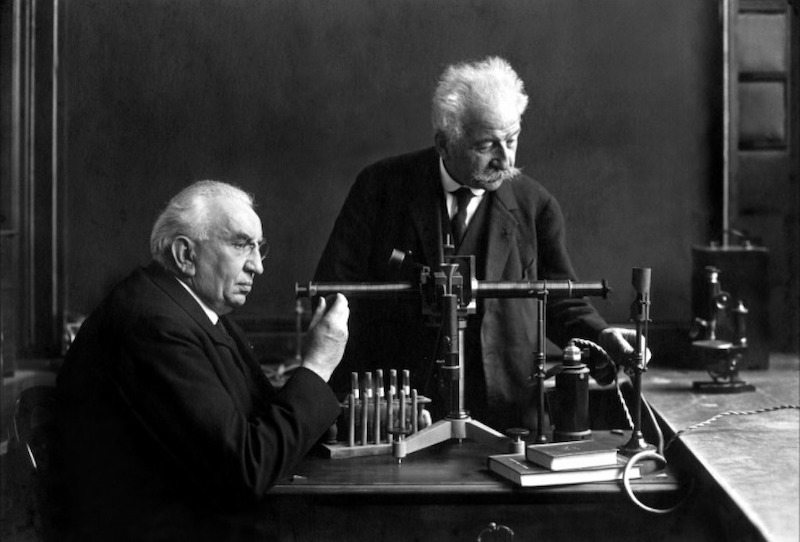 Louis and Auguste Lumière
Louis and Auguste Lumière
When developed, each starch grain remained in place behind its silver halide covering of varying depth (depending on how much light had been filtered), so that when finished, each bit of silver filtered the light passing through its colored grain, reproducing the original proportions of the three colors in the light. From a normal viewing distance, the colors blended to produce an authentic color image.
Although the brothers felt their color photography was more important than movies, their road-show demonstrations of the Cinematographe, especially in Paris, quickly earned public praise and are considered the beginning of cinema history.
Louis died in 1948 and Auguste in 1954.
In our next lesson, we move from light to heat and another invention that changed the world—James Watt and his steam engine.
Learn Something New Every Day
Get smarter with 10-day courses delivered in easy-to-digest emails every morning. Join over 400,000 lifelong learners today!
Quote
“The cinema is an invention without any future.” – Louis Lumière
Recommended book
The Movie Book (Big Ideas Simply Explained) by DK
Share with friends

